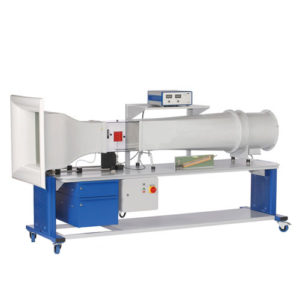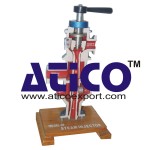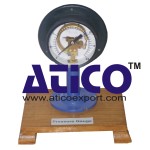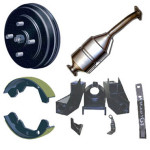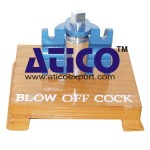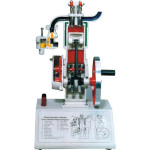A wind tunnel is the classic experiment system for aerodynamic flow experiments. The model being studied remains at rest while the flow medium is set in motion, and thus the desired flow around the model is generated.
It is an “Eiffel” type open wind tunnel used to demonstrate and measure the aerodynamic properties of various models. For this purpose, air is drawn in from the environment and accelerated. The air flows around a model, such as an aerofoil, in a measuring section. The air is then decelerated in a diffuser and pumped back into the open by a fan.
Learning Objectives/Experiments
- Experiments with accessories
- Determine drag and lift coefficients for different models
- Pressure distribution on bodies immersed in a flow
- Boundary layer analysis
- Investigation of flutter
- Wake measurement
- In conjunction with the fog generator
- Visualisation of streamlines
Features
- Open wind tunnel for a variety of aerodynamic experiments
- Homogeneous flow through the flow straightener and special nozzle contour
- Transparent measuring section.
Specification
- Experiments from the field of aerodynamics and fluid mechanics with an “Eiffel” type wind tunnel
- Wide range of accessories available
- Transparent, closed measuring section
- Inlet contour, nozzle and diffuser made of GRP
- Variable-speed fan motor for energy-efficient operation
- Flow straightener reduces turbulence
- Electronic two-component force sensor for measuring the flow forces
- Inclined tube manometer for displaying the air velocity
- Digital display of drag and lift
- Display of measured values for velocity, forces, moment, displacement/angle, and differential Pressure using system for data acquisition
Technical data
- Measuring section
- flow cross-section WxH: 292x292mm
- length: 420mm
- wind velocity: 3,1…28m/s
- Axial fan
- power consumption: 2,2kW
- Measuring ranges
- force:
- lift: ±4N
- drag: ±4N
- velocity: 3,1…28m/s
- angle: ±180°
- 230V, 50Hz, 1 phase
- 230V, 60Hz, 1 phase; 230V, 60Hz, 3 phases

